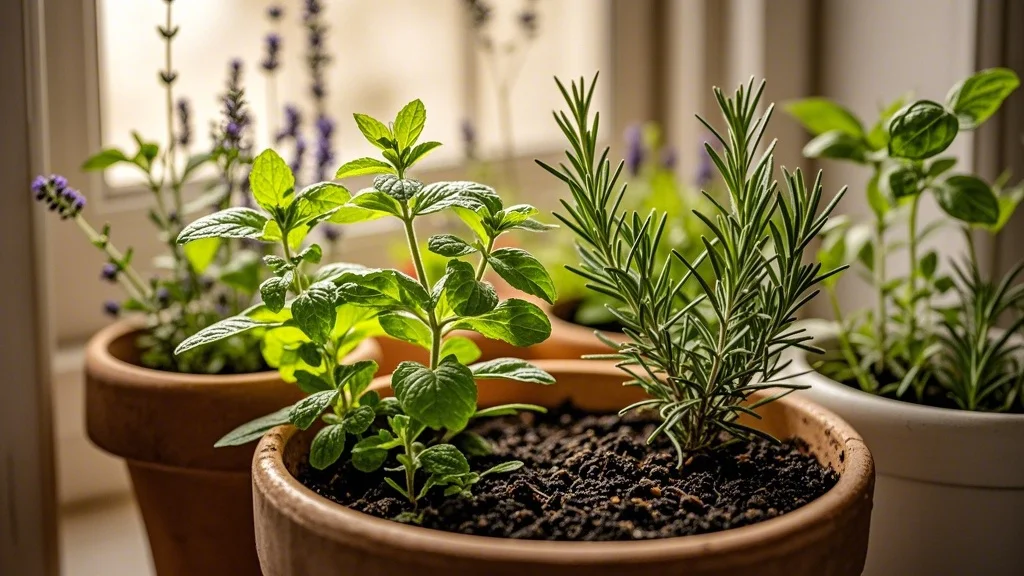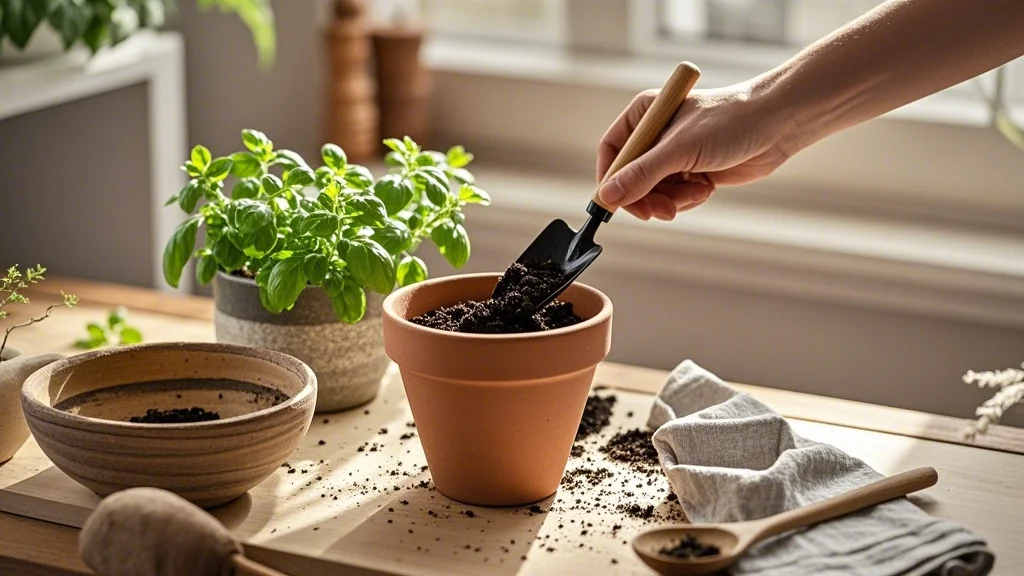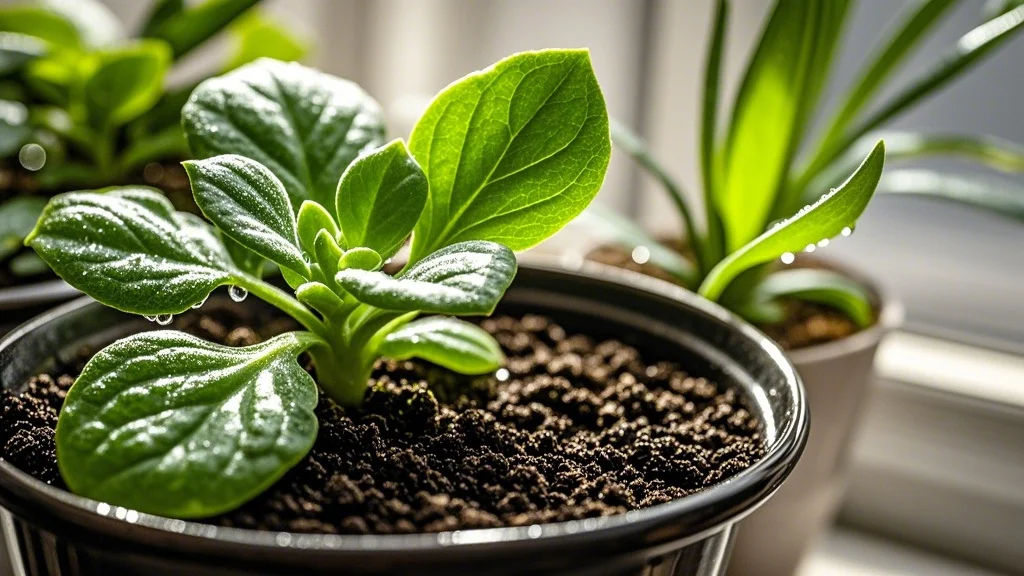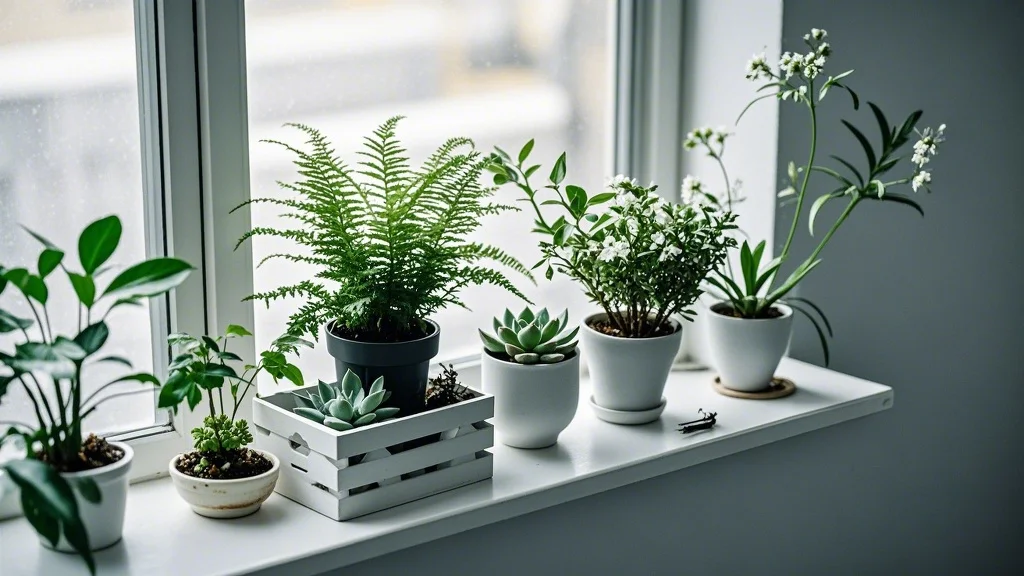For cooking enthusiasts and urban gardeners alike, there’s nothing quite like the convenience and satisfaction of having fresh herbs right at your fingertips. A windowsill herb garden is the perfect solution for those looking to add a touch of green to their kitchen while enjoying the benefits of homegrown, aromatic ingredients. In this comprehensive guide, we’ll walk you through everything you need to know to create and maintain a thriving windowsill herb garden, ensuring you always have fresh herbs on hand for your culinary creations.
Contents
Choosing the Right Location

Assessing Your Windowsill
The first step in creating your windowsill herb garden is selecting the ideal location. Consider the following factors:
- Sunlight: Most herbs require at least 6 hours of direct sunlight daily. South-facing windows are typically best, but east or west-facing windows can also work well.
- Temperature: Herbs prefer temperatures between 60-70°F (15-21°C). Avoid placing them near drafty windows or heating/cooling vents.
- Space: Ensure your windowsill is wide enough to accommodate your chosen containers without risk of falling.
Maximizing Limited Space
If your windowsill space is limited, consider these options:
- Tiered planters
- Hanging planters
- Vertical garden systems
- Window boxes (for exterior mounting)
Selecting Your Herbs
Popular Culinary Herbs for Windowsills
- Basil
- Chives
- Cilantro
- Mint
- Oregano
- Parsley
- Rosemary
- Thyme
Considerations for Herb Selection
- Growth habits: Some herbs, like mint, spread quickly and may require their own container.
- Compatibility: Group herbs with similar water and sunlight needs together.
- Culinary preferences: Choose herbs you’ll actually use in your cooking.
Essential Supplies
Containers
- Material options: Terracotta, ceramic, plastic, or metal
- Size: At least 6 inches deep for most herbs
- Drainage: Ensure proper drainage holes
Soil
- Use a well-draining potting mix specifically formulated for herbs
- Avoid garden soil, which can be too heavy and may contain pests
Tools
- Small trowel
- Pruning shears
- Watering can with a narrow spout
- Plant markers or labels
Planting Your Herbs

Step-by-Step Planting Guide
- Fill your containers with potting mix, leaving about an inch of space at the top.
- If starting from seeds:
- Create small depressions in the soil
- Place 2-3 seeds in each depression
- Lightly cover with soil
- Water gently
- If using seedlings or small plants:
- Create a hole in the soil slightly larger than the root ball
- Gently remove the plant from its original container
- Place the plant in the hole, ensuring it’s at the same depth as before
- Fill in around the roots with soil and pat gently
- Water thoroughly after planting
- Label each herb for easy identification
Caring for Your Windowsill Herb Garden
Watering
Proper watering is crucial for the health of your herbs. Follow these guidelines:
- Water when the top inch of soil feels dry
- Avoid overwatering, which can lead to root rot
- Water at the base of the plants to avoid wetting the leaves
- Use room temperature water to prevent shocking the plants
Fertilizing
Herbs generally don’t require heavy fertilization, but a little boost can help:
- Use a balanced, water-soluble fertilizer diluted to half strength
- Apply every 4-6 weeks during the growing season
- Avoid over-fertilizing, which can affect the flavor of the herbs
Pruning and Harvesting
Regular pruning encourages bushier growth and prevents herbs from becoming leggy:
- Pinch off the top sets of leaves regularly
- Never remove more than 1/3 of the plant at once
- Harvest herbs in the morning for the best flavor
- Use clean, sharp scissors or pruning shears
Pest Management
While indoor herbs are less susceptible to pests, they can still occur. Watch for:
- Aphids
- Spider mites
- Whiteflies
- Fungus gnats
If you spot pests:
- Isolate the affected plant
- Rinse the leaves with water to dislodge pests
- Apply insecticidal soap or neem oil if necessary
- Improve air circulation around plants
Seasonal Care
Adjust your care routine throughout the year:
- Summer: Increase watering frequency and provide shade during intense heat
- Winter: Reduce watering and fertilizing as growth slows
- Spring/Fall: Gradually adjust care as daylight hours change
Common Challenges and Solutions
Leggy Growth
Cause: Insufficient light
Solution: Rotate plants regularly or supplement with grow lights
Yellowing Leaves
Cause: Overwatering or nutrient deficiency
Solution: Adjust watering schedule or apply a balanced fertilizer
Wilting
Cause: Underwatering or root rot
Solution: Check soil moisture and adjust watering accordingly; ensure proper drainage
Slow Growth
Cause: Poor soil quality or lack of nutrients
Solution: Repot with fresh, high-quality potting mix and fertilize as needed
Expanding Your Windowsill Garden
As you become more comfortable with your herb garden, consider these ideas for expansion:
Companion Planting
Some herbs grow well together and can even enhance each other’s flavors:
- Basil and parsley
- Chives and cilantro
- Rosemary and thyme
Experimenting with Less Common Herbs
Try growing these unique herbs to expand your culinary repertoire:
- Lemon balm
- Thai basil
- Chervil
- Tarragon
- Lemongrass
Creating Theme Gardens
Design your windowsill garden around specific cuisines or uses:
- Italian herb garden: Basil, oregano, thyme, and rosemary
- Tea garden: Mint, chamomile, and lemon balm
- Salad garden: Chives, parsley, and dill
Cooking with Your Homegrown Herbs
Harvesting for Optimal Flavor
- Pick herbs in the morning after the dew has dried but before the day heats up
- Use sharp scissors or pruning shears to make clean cuts
- Harvest outer leaves first, allowing inner leaves to continue growing
Storage Tips
- Short-term: Store herbs in a glass of water in the refrigerator, changing water daily
- Long-term: Freeze herbs in ice cube trays with water or oil
- Drying: Hang herb bundles in a warm, dry place for 1-2 weeks
Culinary Uses
Experiment with your fresh herbs in various dishes:
- Add to salads for a burst of flavor
- Infuse oils and vinegars
- Create herb-based sauces like pesto or chimichurri
- Use as garnishes for soups, stews, and cocktails
- Incorporate into baked goods for unique flavors
Conclusion
A windowsill herb garden is a rewarding project that brings the joys of gardening indoors while providing fresh, flavorful ingredients for your cooking. With the right setup, care, and attention, you can enjoy a thriving herb garden right in your kitchen. Not only will you have convenient access to fresh herbs, but you’ll also experience the satisfaction of growing your own food and the beauty of living plants in your home. Start small, experiment with different herbs, and soon you’ll be well on your way to becoming a windowsill gardening expert. Happy growing and bon appétit!








